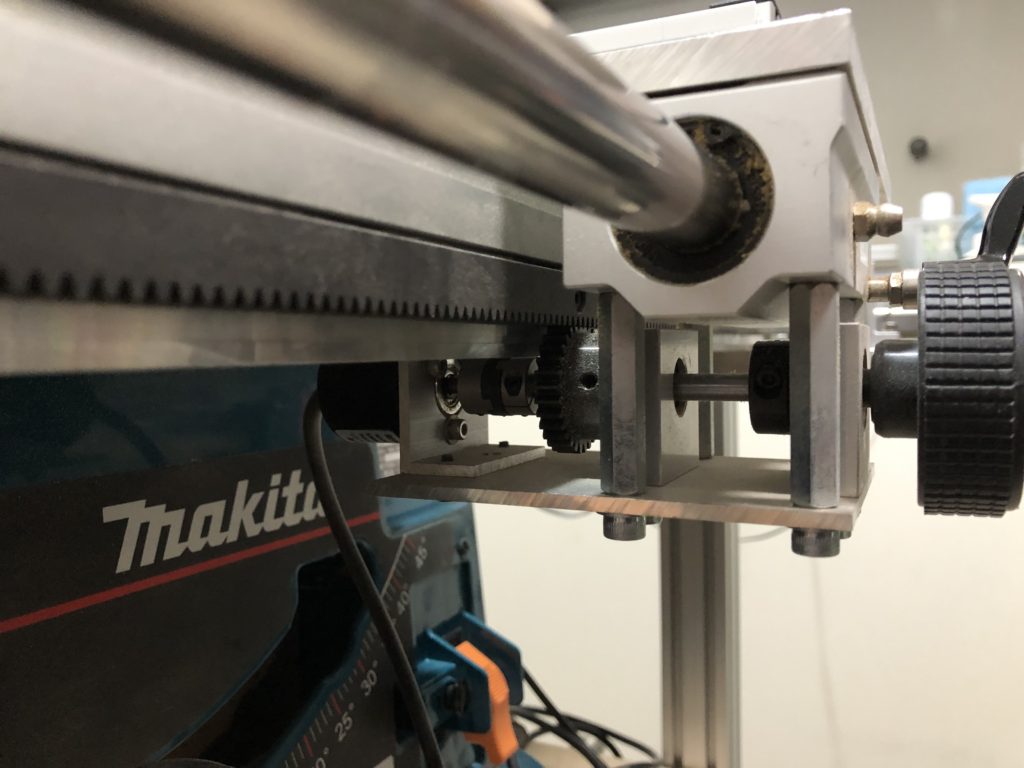I improved my Makita 2703 table saw by replacing the stock fence with a custom one incorporating a digital readout to display the width of cut.
The fence is a 40 mm x 40 mm aluminum extrusion attached to ball bushing blocks that glide on steel rails at front and back of the saw. The fence is locked securely by independent locks on both rails. The design is rigid enough to maintain parallel with the blade as long as excessive force isn’t applied.
The measuring system consists of a rack attached to the saw table, and a pinion that turns a rotary encoder attached to the fence assembly, The user zeros the readout by pressing the zeroing button with the fence butted against the saw blade. As the fence is moved, the distance is calculated based on the rack/pinion dimensions and number of encoder pulses.
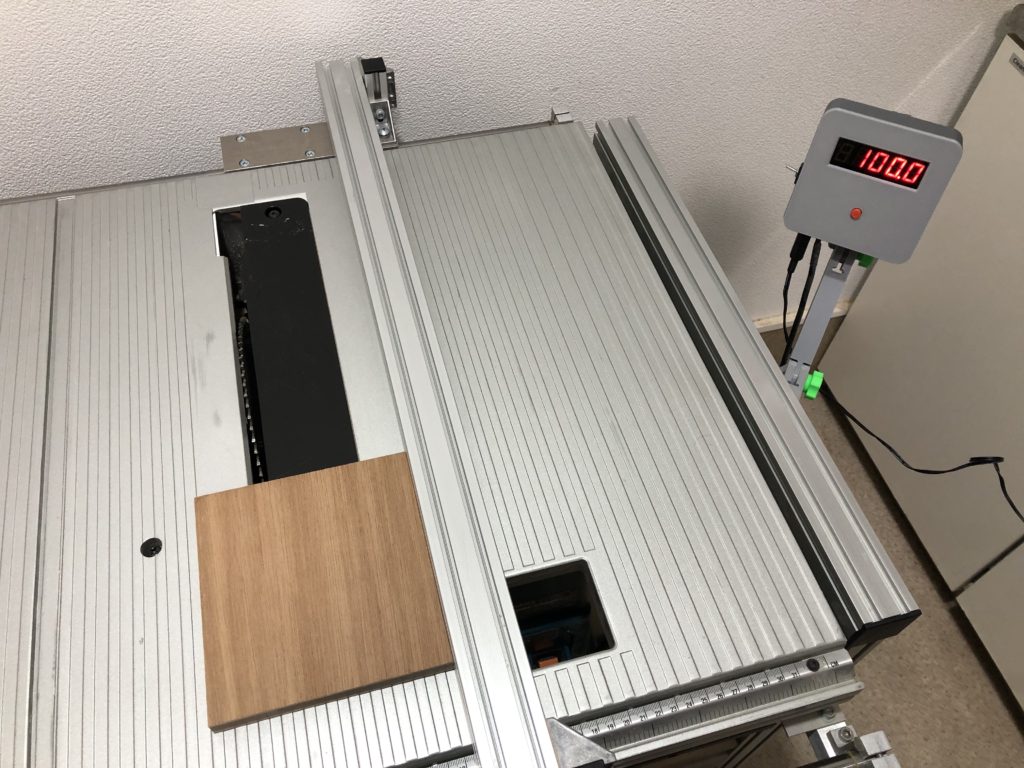
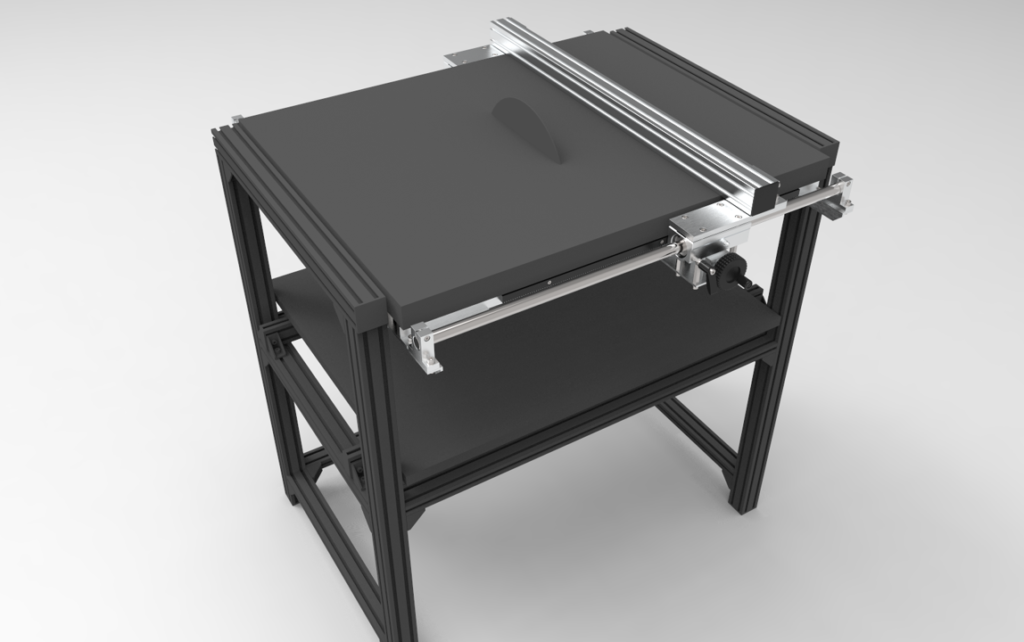
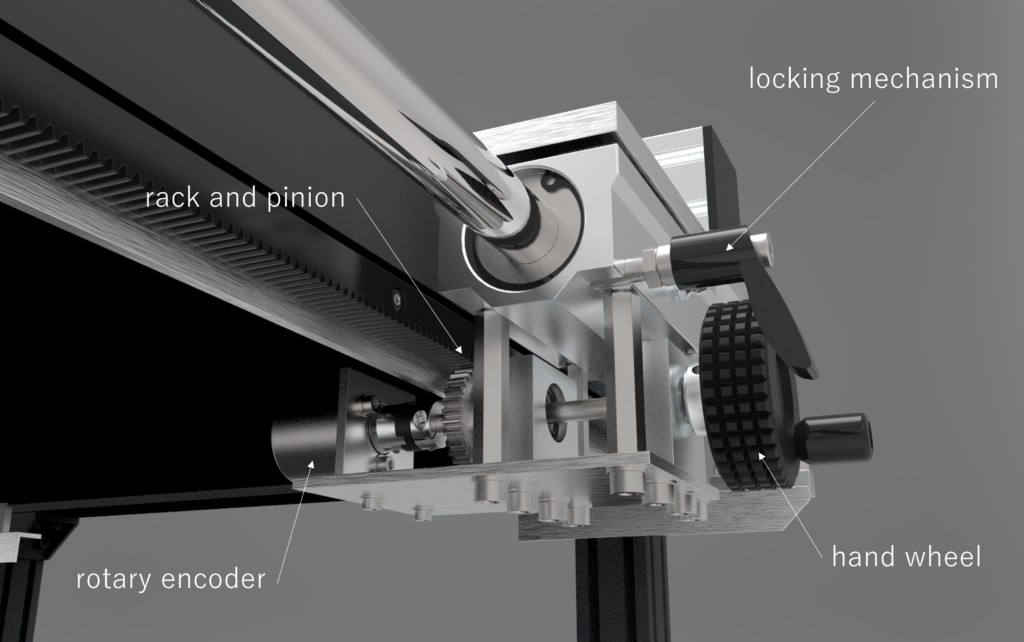
The rotary encoder
The rotary encoder is an Autonics E30S4-1000-3-N-5, which outputs 1000 pulses/rev. and is connected to an ATtiny85. The ATtiny85 counts the pulses and calculates the distance in mm from the point where the unit was zeroed, and several times each second outputs the result to a PIC16F1933, which handles displaying the distance on a 5 digit, 7 segment LED module.
The encoder outputs are two 50% duty square waves, A and B, that are 90 degrees out of phase. Not only distance, but direction can accounted for based on the triggering pattern of the A and B pulses.
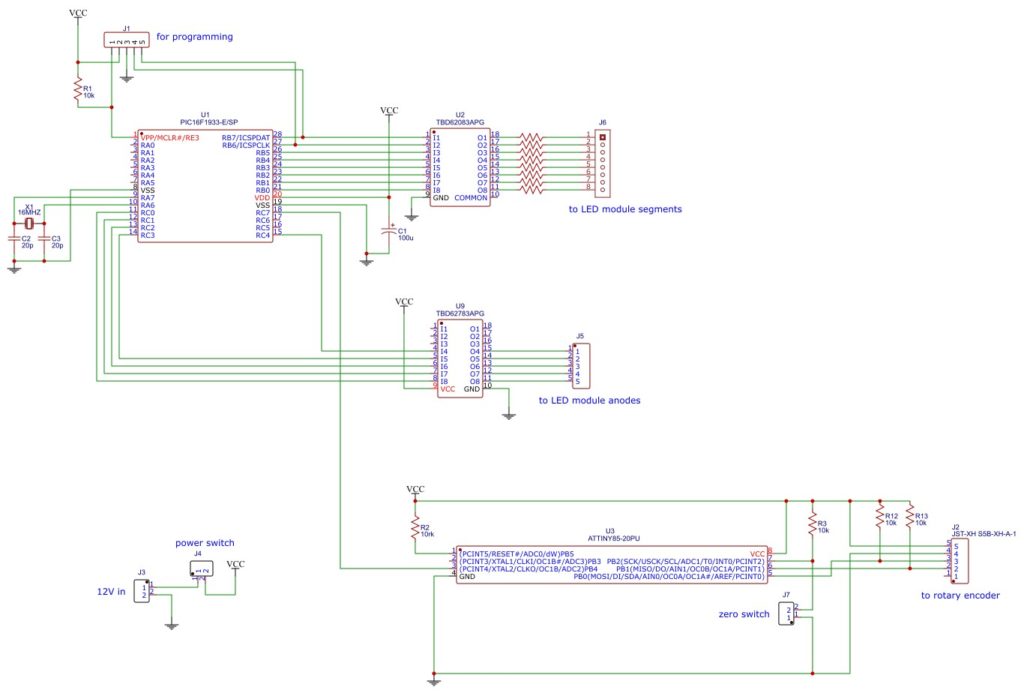
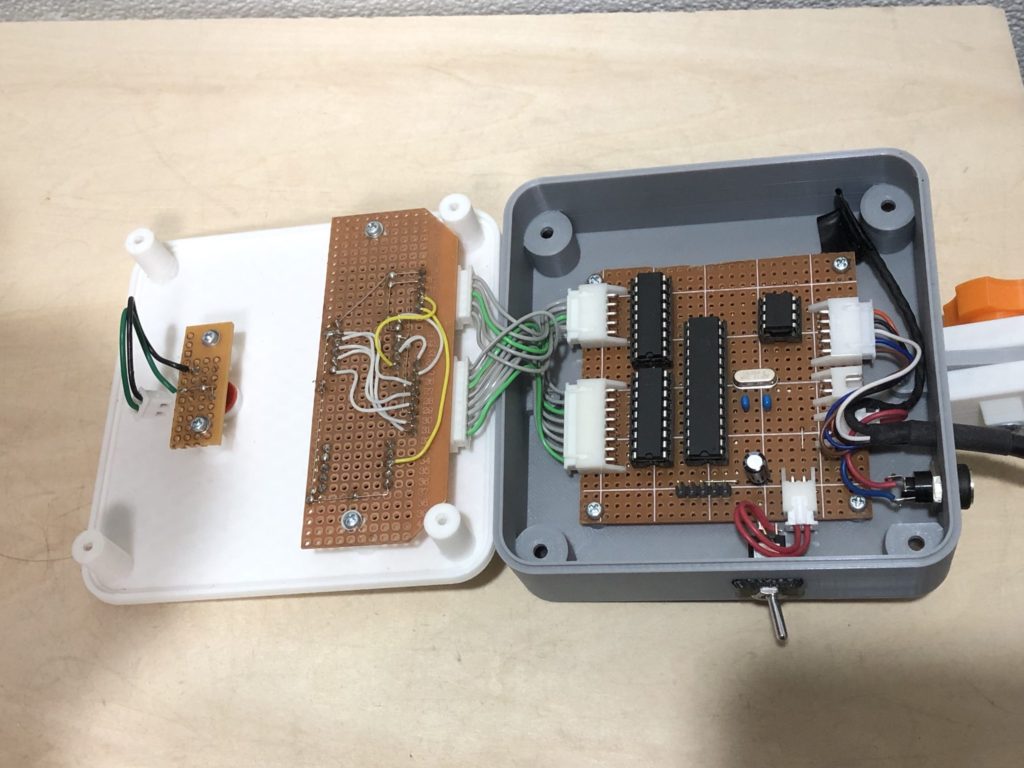
The waveforms in the upper photo below show the A and B outputs when the encoder is turning at a relatively steady rate. But if the turning is unsteady, as is the case when the fine tuning the fence position, with the speed very low and actually reversing direction, the waveforms can be as shown in the lower photo. In this situation, it is possible to count multiple successive pulses of A or B and interpret this as the encoder turning in one direction.
To prevent this, the ATtiny85 is set to trigger on input change (either rising or falling) for the pin attached to A, then checks B, and counts the pulse as an advance only if B is the opposite polarity to A.
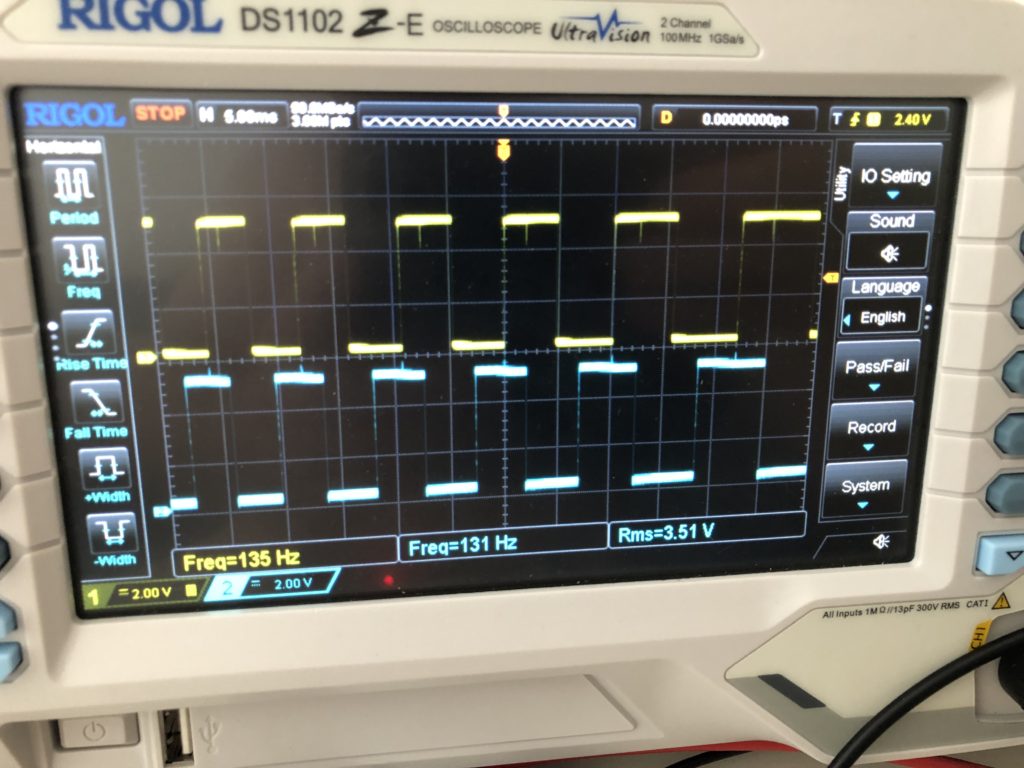
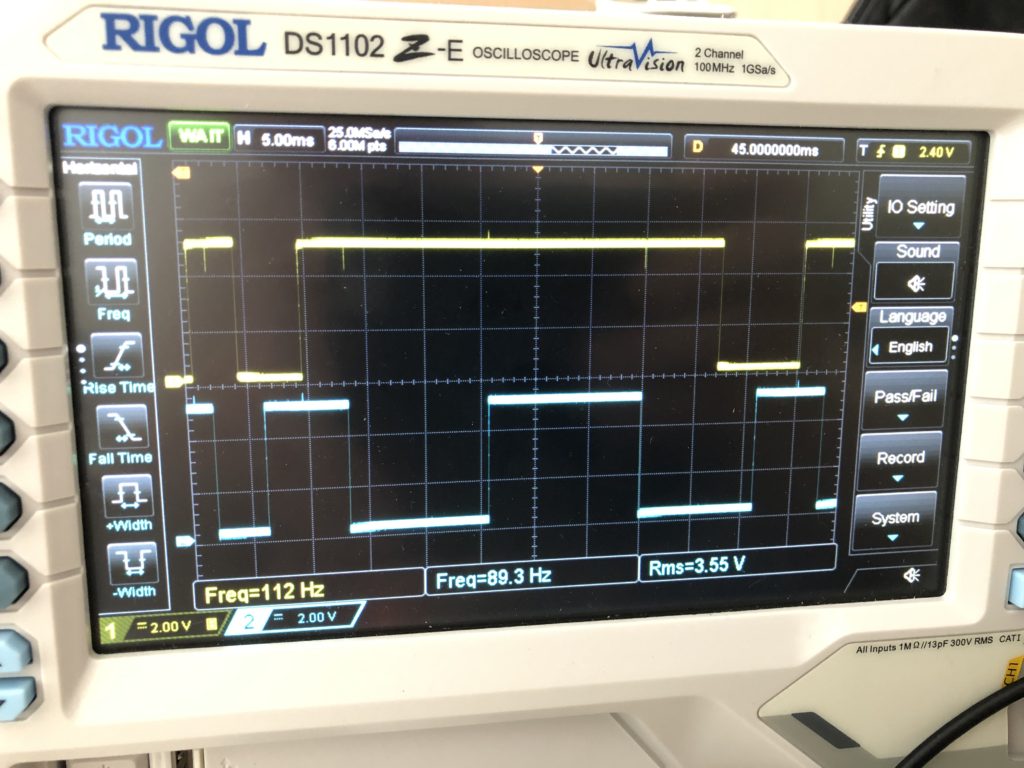
Extension to the slider miter saw
The readout has improved my efficiency and precision in cutting with the table saw so much that I have also adopted it in my sliding miter saw stop.
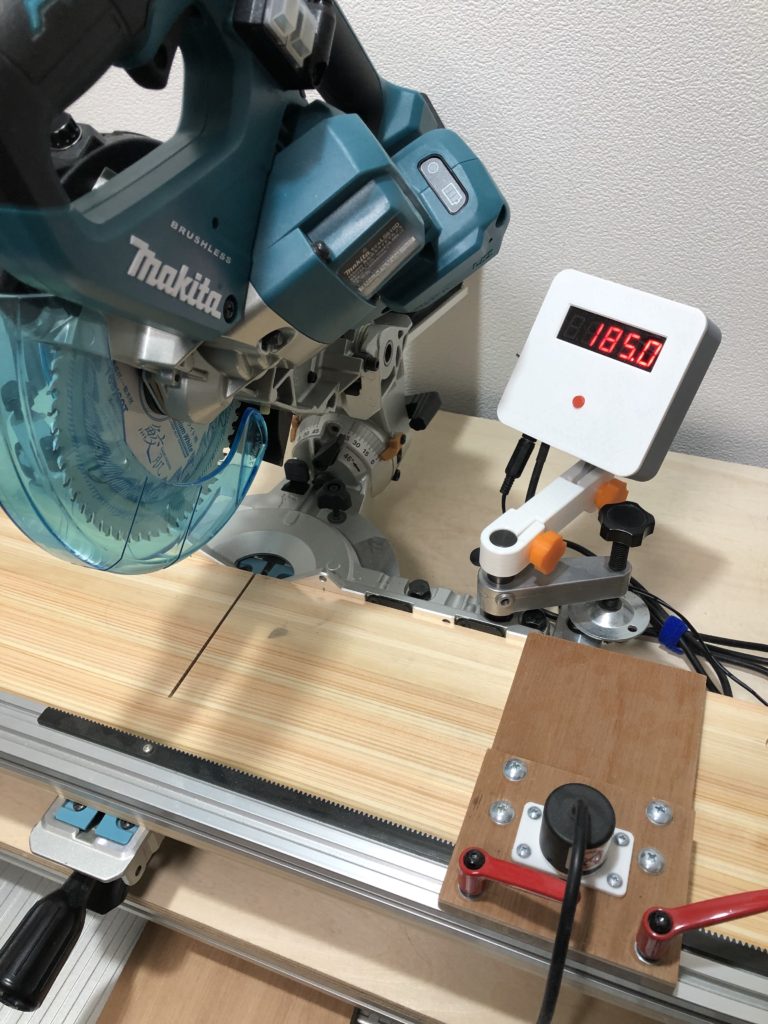
Additional images

